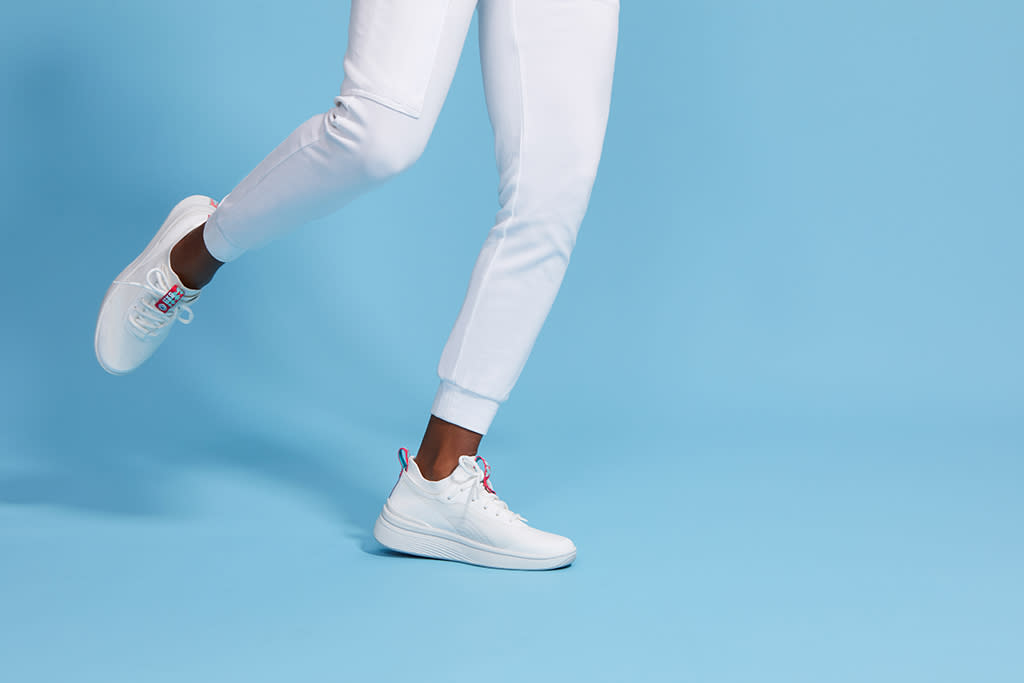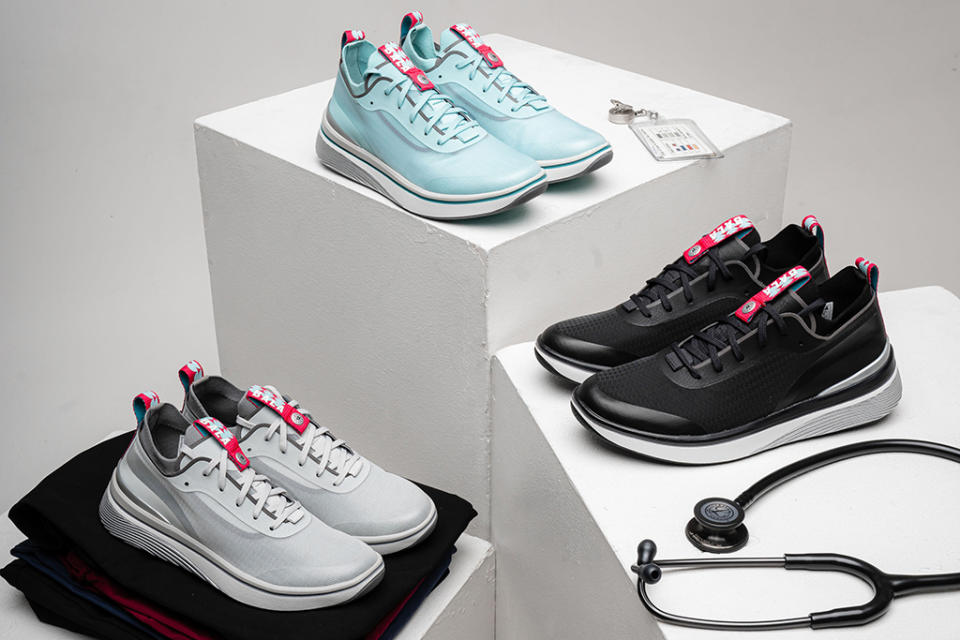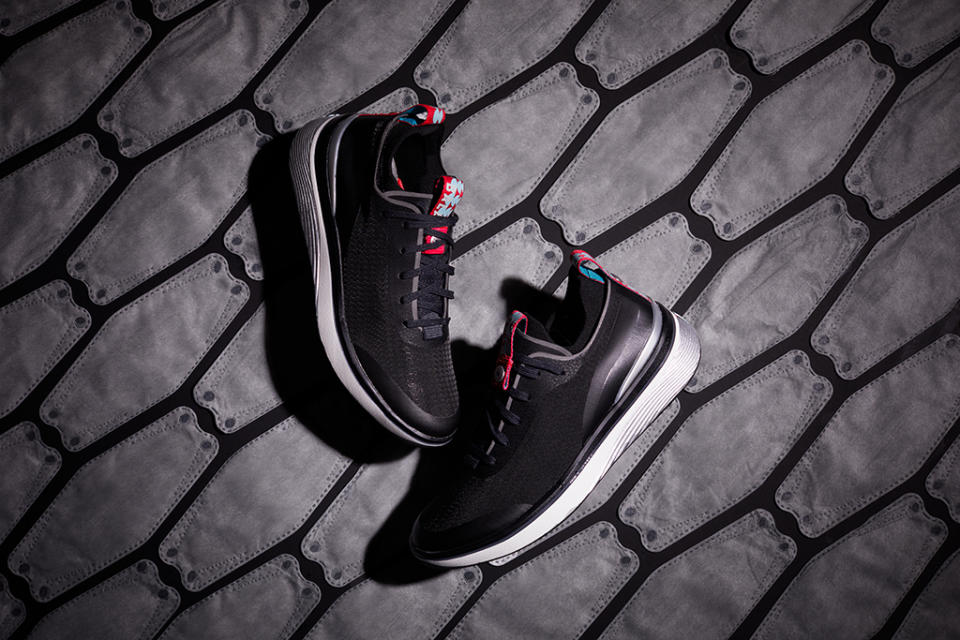How Two Nike Alumni Built Bala Footwear, a Brand Gaining Ground With Nurses — and Even Bartenders

During their time working together at Nike, Brian Lockard and John Eberle catered to the needs of elite athletes. With their new venture, Bala Footwear, the industry veterans are applying that same mentality to healthcare.
The two founded Bala Footwear in 2019, a brand with a mission to create solutions without compromise for healthcare professionals. Lockard, a former strategic planning manager at Nike, told FN that Bala believes healthcare professionals should be treated like elite athletes, and its products will “enhance their performance on the shift.”
More from Footwear News
Foot Locker Inc. and Fanatics Announce Long-Term Connected Inventory Partnership
Amid a DTC Boom, Skechers, Puma and Steve Madden Pick Up Wholesale Wins
Aisle 3 Launches to Revolutionize E-commerce, Product Search Experience
In January 2021, the company delivered its first-ever shoe to the market, dubbed the Twelves. The look, which was named after a nurse’s 12-hour shift, arrived in four colorways — “Flow White,” “Nocturnal Black,” “Daybreak Blue” and “Shade Gray” — with a $150 price tag.
Not only is the shoe name a nod to nurses, but its features are also directly inspired by them. Bala created the Twelves to be lightweight and with arch support, fluid resistance, high traction, and the ability to be cleaned. Essentially, the shoe is built to withstand the rigors of 12-plus hours on the job.
Since the arrival of Bala’s first shoe, the company confirmed it has raised $2.275 million in venture funding to date, and launched with $1 million in presale. In its first year, Bala said it earned $4 million in revenue, and that sales have doubled month-over-month since September 2021.
Also, the brand partnered with Pensole Lewis College of Business and Design in June 2021, which was founded by former Nike and Jordan Brand designer D’Wayne Edwards. Lockard said Edwards and his team will guide the innovation process for Bala, and will also enhance its existing product and help expand the brand’s product line.

Courtesy of Bala Footwear
Retail Approach
Since the brand’s first shoe arrived in January 2021, Bala Footwear has operated as a direct-to-consumer company. But as pandemic restrictions loosened, Lockard said wholesale opportunities with brick-and-mortar retailers became increasingly attractive.
“A lot of the speculation about people’s shopping habits that grew during the pandemic, whether they’d remain the same or accelerate regarding the shift to e-commerce, have proven to be inaccurate. Consumers have returned to pre-pandemic shopping behavior,” Lockard said.
What’s more, Lockard believes Bala’s shoes stand out in physical stores.
“Footwear is inherently a personal business. Our feet are very specific in a way that apparel like shirts and pants just aren’t. We differentiate our brand on the high quality of the product,” he said. “Where that dramatically stands out is at physical retail where a person can try on the shoe in a low risk environment, they can ask questions of a knowledgeable sales person who can understand their needs and articulate the benefits of the product in a way that’s meaningful to them.”
Eberle added, “Most people want to touch, feel, try on, see, relate with their shoes before they purchase. They also want to ask questions of experts and see selection. This experience is difficult to nail in an online environment. Luckily, consumers can go to stores to get exactly this type of experience.”
But the reason to go the wholesale route for Bala wasn’t just rooted in opportunity. It’s also a necessity.
Lockard admitted DTC has been challenging, and there have been several hurdles to overcome without having retail partners. One challenge, Lockard said, is increased advertising and marketing costs.
“Google, Facebook, etc., has become substantially more expensive than they were two years ago,” Lockard said. “Between January and March of this year, our CPMs [cost per mille] on Google and Facebook has doubled, and that was at the same time that the tracking became less effective to the iOS update. Our ability to grow awareness of our brand and connect with our consumers became hampered because of those changes. As an early-stage business, we don’t have the capital that larger companies do to eat those costs.”
Aside from advertising and marketing expenses, Lockard said shipping costs have also increased substantially in the last couple of years.
“We offer free shipping and returns to create the best experience possible doing business D2C, and then online footwear retail returns and exchanges average 20% driven primarily by people not getting the right size in their first purchase. Those costs have gone up anywhere from 20% to 30% in the last year, driven by the supply chain issues,” Lockard said.
To that end, Bala has evolved from a DTC business to an omnichannel one. In May, the brand landed its first retail accounts — Shoe Mill in Oregon and Jenkintown Running Co. in Philadelphia — which has 12 and two doors, respectively.
“Running specialty is really interesting. By our surveys, 80% of healthcare professionals are wearing some type of running shoe because they’re familiar with it. They’re heading into running specialty stores to buy product, and those stores don’t have a product designed to really help,” Lockard said. “And comfort stores like Shoe Mill, they specialize in true service and have the breadth of assortment to serve consumers that wear their shoes in a hard way.”
Aside from these two channels, Lockard admitted another two are also attractive to Bala.
“Retailers that focus on apparel and footwear specific to healthcare, we’re exploring the right verticals to be in there,” Lockard said. “And it’s funny that traditionally, telling somebody their shoes look like nursing shoes is a way to tell them their shoes look ugly. We’ve created a product that is truly beautiful, and we see opportunity for it to show up in fashion retailers that are looking for something interesting and different, something that creates energy.”
But consumers and market-watchers alike should not expect to see Bala expand its retail base rapidly.
“Door count is really important projecting revenue numbers and margin, etc., but our focus is on creating the best experience. The worst outcome is a consumer going into a location and having a bad experience,” Lockard said. “Our priority is to move judiciously, identify partners that share our values and continue create great experiences for customers, and then move at the right pace with each of them so the business can grow at the right pace.”
Eberle added, “The ideal commercial balance for Bala Footwear is DTC, wholesale and institutional. The goal of commercial is to be present when our consumer is on their shopping journey. This means excellent brand experiences on our own digital channels and at pop-up locations. It means showing up in brilliant ways in medical, comfort and running specialty retail stores. And it also means serving the healthcare professional through hospitals, clinics and universities. The balance of these will vary on the season but an annual 33% split across the three would be healthy.”

Courtesy of Bala Footwear
Product Expansion
While Bala will move slowly when it comes to retail expansion, the expansion of its product range will move a bit faster.
“Bala Footwear will service the healthcare professional both on the job and while recovering from the job,” Eberle said. “In 2023, we will bring an additional running shoe silhouette into the mix to offer that service worker who desires a lighter weight, more versatile shoe without totally sacrificing up our other core performance elements. We will also offer a more casual silhouette that satisfies the service worker who might not be locked into wearing scrubs or desires a more formal look. And we will also address treating the foot with respect and relief once the long shift at work is over.”
This product expansion may also benefit the unexpected consumers Bala found outside of the healthcare field with the release of the Twelves, such as bartenders.
“The beauty of diversifying our distribution is that these are places where other people [outside of healthcare] come to shop. When we spoke with the president at Shoe Mill [Josh Habre], he said, ‘I have tons of healthcare professionals coming into my stores, and I have bartenders, teachers, retail sales — people who are on their feet all day who we can bring this product to.’ The key to targeting [people outside of healthcare] is being available where they choose to shop in colors and styles that are relevant for them,” Lockard said.
He continued, “If you’re a runner and you’re looking for a product for the 10K you have coming up, you know to look at what great runners like Eliud Kipchoge are wearing. If you have a job where you stand all day, people know to look at what their nurse or doctor is wearing because that’s the best shoe for standing all day.”

Courtesy of Bala Footwear
Best of Footwear News
8 Best Supination Insoles to Stabilize and Support Your Feet
Why Does My Foot Fall Asleep? Expert-Recommended Tips to Stop That Annoying Pins & Needles Sensation
Sign up for FN's Newsletter. For the latest news, follow us on Facebook, Twitter, and Instagram.

